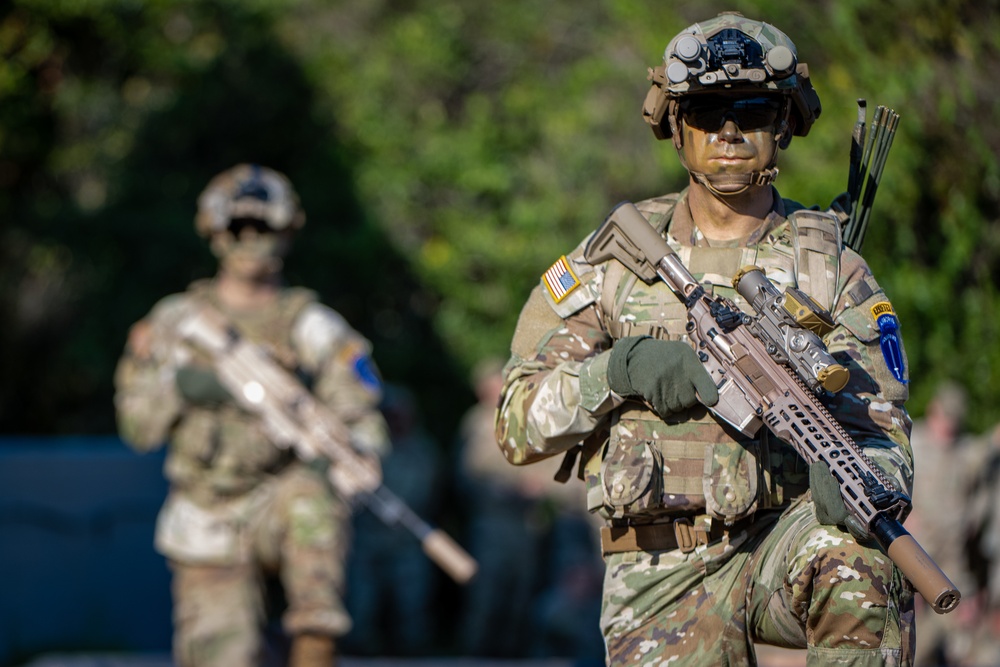The rise, fall and resurgence of the battle rifle

(U.S. Army)
SUMMARY
While not a doctrinal term, battle rifle is used to differentiate a service rifle chambered in a full-power cartridge from service rifles chambered in a smaller, intermediate cartridge. The battle rifle arguably first saw general issue during WWII with the U.S. M1 Garand, Soviet SVT-40 and German Gewehr 41 and 43. During the Cold War, the battle rifle saw widespread adoption with NATO's adoption of the full-power 7.62x51mm cartridge as well as the M14 and FAL rifles. The adoption of the intermediate 5.56x45mm NATO cartridge caused a decline in the battle rifle's popularity during the late 20th century. However, in the 21st century, it has seen a resurgence with militaries returning to more powerful rifle cartridges.
After WWII, the Soviet Union adopted the AK-47 (later modernized as the AKM), chambered in the intermediate 7.62x39mm cartridge, as its standard service weapon. Classified as an assault rifle, the AK platform was lighter than previous service rifles and gave communist soldiers the ability to employ higher rates of fire while also carrying more ammunition. Meanwhile, the FAL adopted by most NATO nations was longer than the AK and fired the heavier-hitting 7.62mm NATO round. The larger NATO cartridge allowed for only 20-round magazines versus the AK's 30. This also applied to the M14, which the U.S. adopted instead of the FAL, which fired the 7.62mm NATO round.
During the early stages of the Vietnam War, the U.S. realized the disadvantage that the M14 put its troops at against communist troops armed with AKs. While the 7.62mm NATO was more powerful and more effective at longer range, the intermediate 7.62x39mm round of the AK could be fired faster and allowed its users to achieve fire superiority in the close-range jungle fighting of Vietnam. This led to America's adoption of the M16 and its intermediate .223 Remington cartridge, later standardized by the NATO as 5.56x45mm.
In the late 20th century, with NATO's adoption of an intermediate cartridge, the battle rifle quickly fell out of favor. Countries with enough money swapped out their 7.62mm NATO FALs, M14s and G3s for 5.56mm NATO M16s, AUGs and G36s. Lighter and more versatile, assault rifles became the service weapon of choice for most major militaries. Some countries, like Sweden and Norway, kept their battle rifles in use with their Home Guard while regular infantry units transitioned to assault rifles.
In the 21st century, especially during the Global War on Terror, the limitations of the assault rifle and its intermediate cartridge were highlighted. Lacking the long-range stopping power and accuracy of full-power rifles, assault rifles were augmented with marksman rifles like accurized M14s and the M110, both chambered in 7.62mm NATO. Especially in mountainous terrain, full-power rifle cartridges can be a better choice for infantry over weaker intermediate cartridges. In 2021, the Indian military purchased over 140,000 7.62mm NATO battle rifles from SIG Sauer. With the second-largest military in the world, after China, India's heavy investment in a full-power service rifle marked a significant resurgence for the type.
In 2022, the U.S. Army awarded SIG Sauer the contract for its Next Generation Squad Weapon. Chambered in the full-power 6.8x51mm Fury cartridge, the XM7 and XM250 are slated to replace the M4 carbine and M249 light machine gun, both chambered in 5.56mm NATO. With similar dimensions to 7.62mm NATO, 6.8 Fury represents a return to the battle rifle for the world's most powerful military. The XM7 even feeds from a standard capacity 20-round magazine and weighs over 10 pounds loaded and equipped with its suppressor. Long-range engagements in Afghanistan and the increased adoption of body armor are cited as reasons for the adoption of a rifle chambered in a full-power rifle round. Time will tell if their militaries will follow this trend.
SHARE
